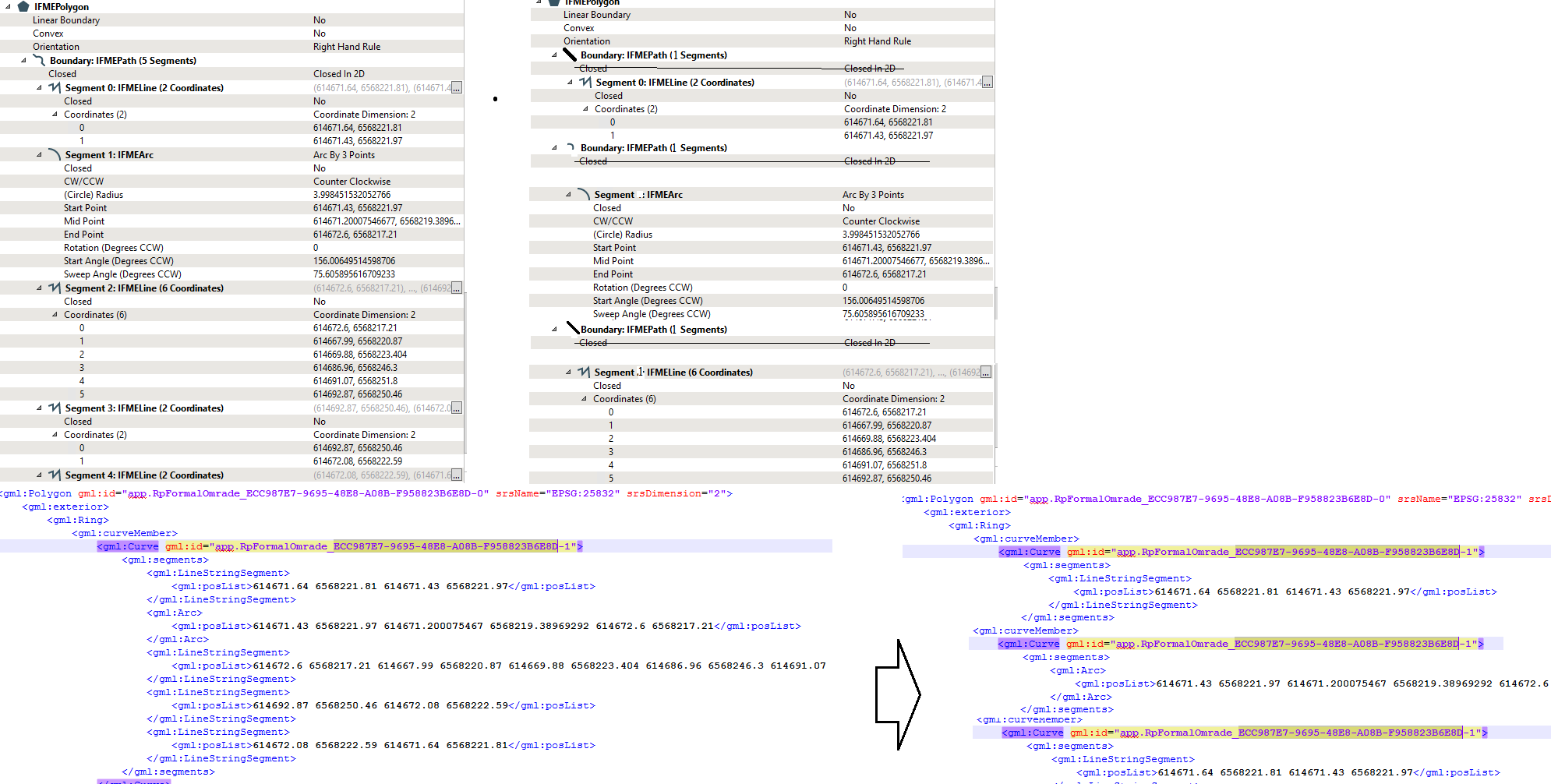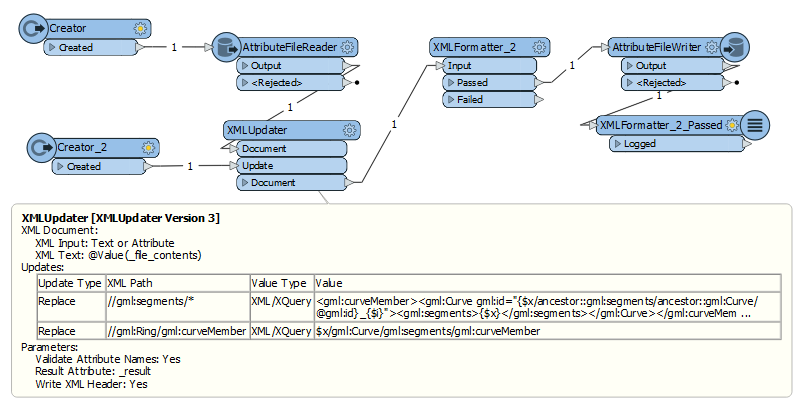Hi,
This is a bit hard to explain so I hope this drawing shows what I want.

I am trying to create a gml spesification where different geometry segments in a polygon feature is split into curvemembers only containing one geometry type.
Basically when you have a boundary of line segments and arc segments, the gml will wrap a curvmember around every geometry type segment. as illustrated.
I am using a GMLFeatureComposer so I have the ability to update each gml feature before writing it out with a text file writer.
Should I use xmlupdator, or is it possible to do anything with the native geometry structure of IFMEPOLYGON to contain multiple IFMEPATH segments?





